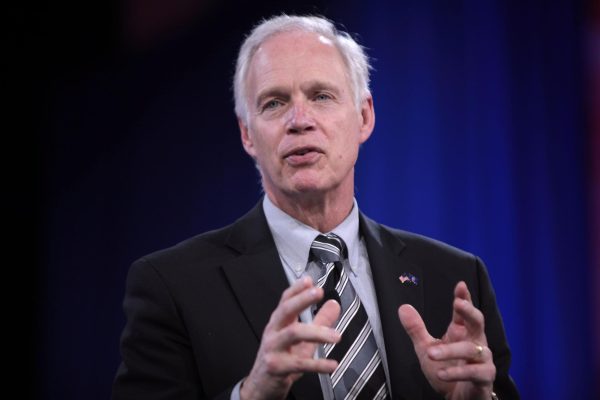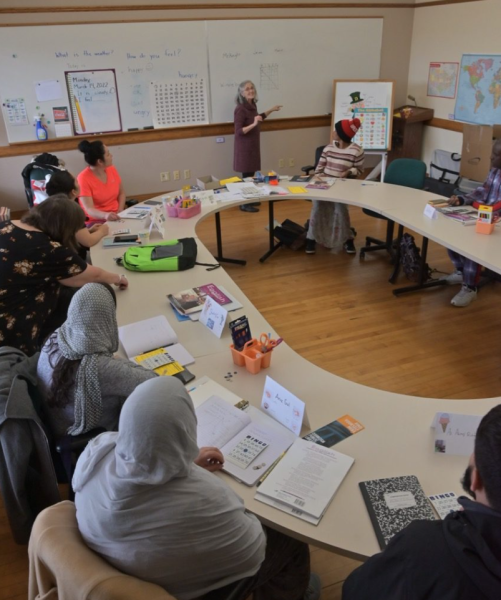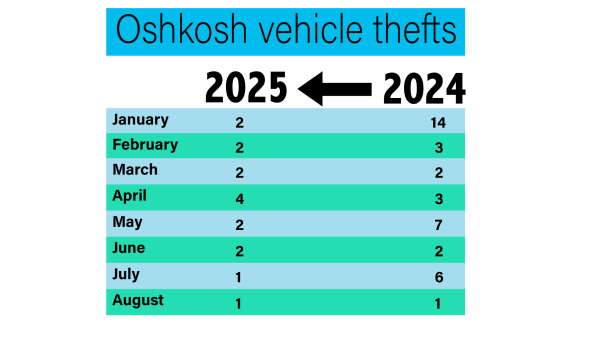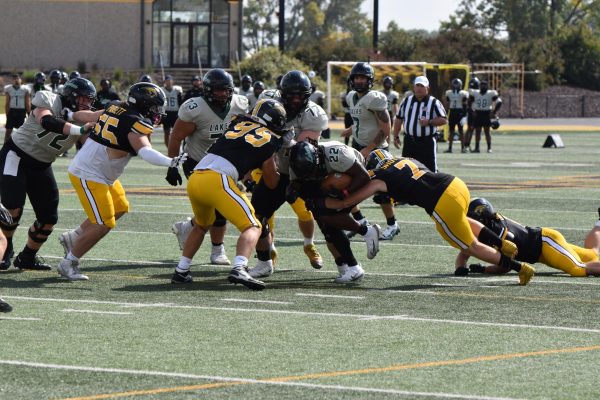COLS announces cuts
Budget cuts could mean changes to tuition pricing, the loss of academic instructors, salary cuts and increased faculty workloads, according to College of Letters and Science Dean Colleen McDermott.
The three-year financial recovery plan, which took effect in September, calls for a $6 million reduction to general-purpose revenue spending, of which about $4 million will come from academic affairs. This amounts to about a 10 percent reduction in spending across all colleges over the three-year period.
The cuts are distributed unevenly over this period with 30 percent of the cut occurring this year, 50 percent occurring in 2019-20 and 20 percent occurring in 2020-21. The plan also aims to develop and implement revenue-enhancement strategies as soon as possible.
McDermott said plans to increase University revenue will likely involve students paying separately for interim courses.
“There have been several ideas,” McDermott said. “One of them is removing interim from the tuition plateau for the students. That has gone forward to the System. I think that will be approved, but it’s not likely that it will occur very soon. So we’ve been told that January 2020 interim will be on the plateau.”
McDermott said the University is also considering changing the pricing structure of tuition.
“The other idea was to charge students by credit rather than have a plateau at all,” McDermott said. “That was calculated to result in anywhere from $1 million to $4 million in revenue per year. That has not moved forward to the System. We’ve been told that we need to sort of hold back on that one. That requires lots of approval through the legislature and so forth, and this may not be the ideal time for that.”
McDermott said with the $937,000-plus cut to COLS spending coming in 2019-20, salary reductions are inevitable.
“The number that we’re going by in the checkbooks is the absolute minimum that the department has, and it could go up,” McDermott said. “And I know it’s not a pleasant situation to be in. I have empathy, but there is no alternative to cutting salaries. Because this is the earliest we’ve ever given checkbooks to departments by months and months and months, there’s still going to be that wiggle. We don’t know how much increase we’re going to have.”
Reducing instructional academic staff will play a large role in meeting the 2019-20 budget cuts. Many course sections currently taught by IAS will either be eliminated or tacked on to faculty workloads, according to McDermott.
“I’ve had people ask me, ‘Well, how can you add all those extra courses?” McDermott said. “It is not adding extra courses. It is replacing instructional academic staff hires, and it will result in $600,000 to $675,000 in savings. That goes a long way to get us to that $900,000.”
History professor Gabriel Loiacono said reducing IAS might skew the ratio of faculty and staff to students.
“We’re being told that we lost 1,800 students since 2012, and therefore we should be able to shrink our faculty and staff to match them,” Loiacono said. “As is, faculty and staff is perfectly proportionate to the number of students. As if all the students have neatly put themselves into the same sections that we can then cut, and it’s not true.”
McDermott said meeting cuts in departments that don’t have IAS or that have more specialized courses may require more creative solutions.
“If you have another creative idea that will get us the same savings within your department, if you have to have 50-student sections of one course and you want to put them together and one person teaches 100 students, that person doesn’t have to do an extra course then if we can do the same things that way,” McDermott said. “All of that is up for consideration. Talk to your associate deans if you have those great ideas, but it has to be approved by your department.”
McDermott said rules for how cuts can be made were introduced by Provost Koker earlier this year, one of which states shifting funding between budget categories is not allowed.
“If you’ve ever looked at budgets, you can’t go from one column to another,” McDermott said. “You can’t shift supplies and expense money into salary or vice versa.”
McDermott said budgeting to meet reductions with increases in revenue is also not allowed.
“We can’t make this by trying to just increase revenue,” McDermott said. “Increased revenue is great. It will help, but it’s not the way we can take all of our reductions.”
Furloughs, the placement of an employee in a temporary non-duty, non-pay status for budgetary reasons, also cannot be counted toward the required budget reduction.
Loiacono said it’s important to recognize the COLS administration is forced to operate under a lot of restrictions.
“You’re told, “Here is a million-dollar cut, but you can’t do all of these creative things”,” Loiacono said. “And I guess I would suggest that as a faculty we might push back in support of [the COLS administration] and say, ‘Hey, why all the handcuffs? Why can’t we do these things?’”
History professor Michael Rutz said he wonders if the projections on which the budget has been based are accurate.
“We have to meet five percent,” Rutz said. “No flexibility there at all? Maybe since we are starting to see an uptake in students, maybe that projection was made a couple years ago and doesn’t make sense anymore. I mean, I think we really keep pushing on the administration to say we need more information about where the demand for this extreme cut is actually coming from and whether or not real projection might suggest there’s more flexibility there going forward.”
McDermott said there have been discussions about the flexibility of the budget cut requirements.
“Truthfully we’re not at the full 50 percent for next year,” McDermott said. “We’re still looking at things, if someone else resigns, if someone else retires, we have ways to save. We also are in negotiation with the provost and Jim Fletcher to say, ‘Can we stretch this and not take 50 percent of this year?’”
McDermott said though the COLS staff are working hard to make the best of a tough situation, they can only do so much with what they are given.
“Our college gets an allocation,” McDermott said. “I can only distribute the allocation. I cannot distribute more than the allocation. So that’s what we can do. It’s a tough situation, and it’s not pleasant for anyone.”











